site search
online catalog
MODEL 1836 FLINTLOCK PISTOL BY JOHNSON DATED 1842
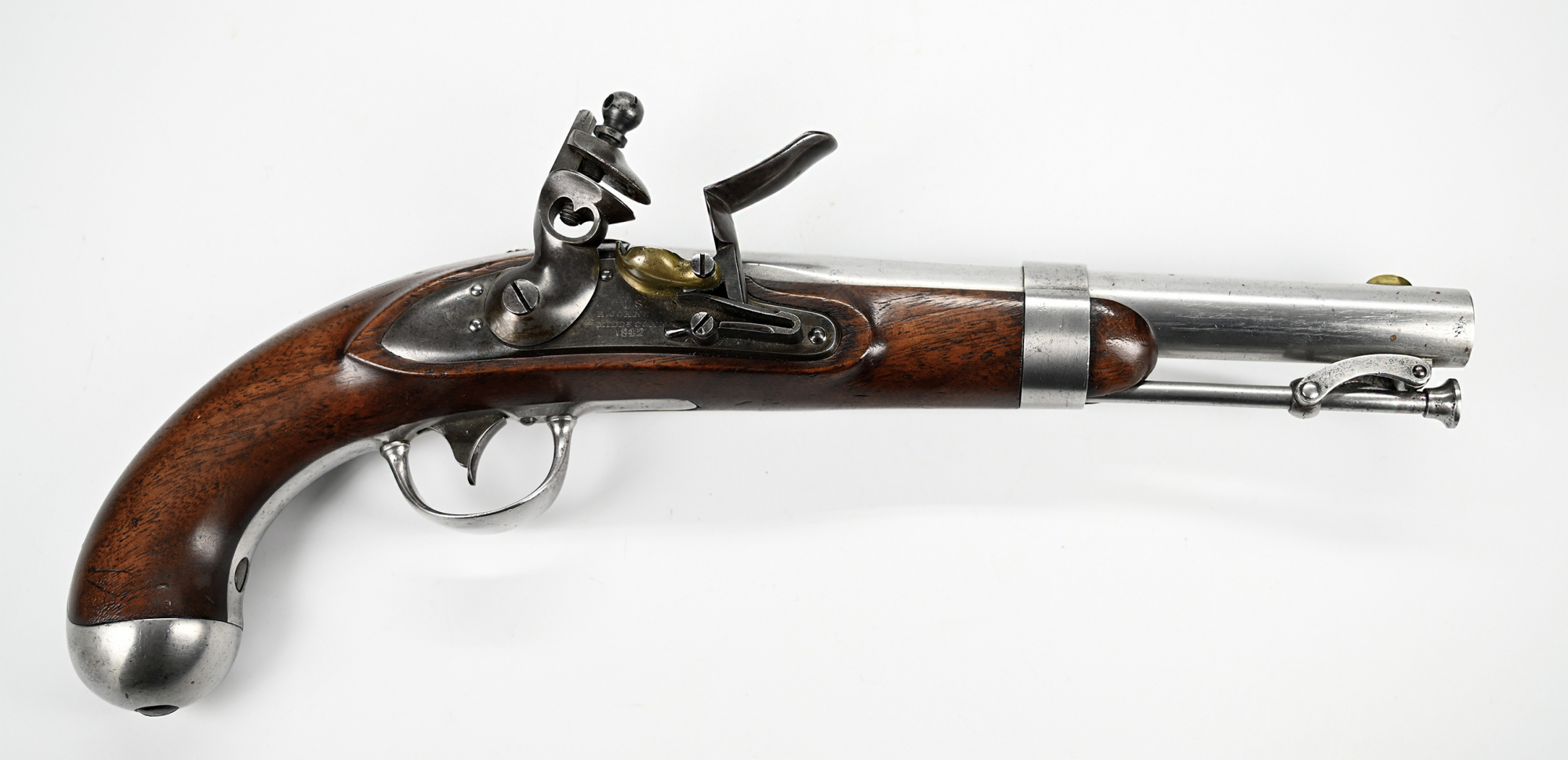
Hover to zoom

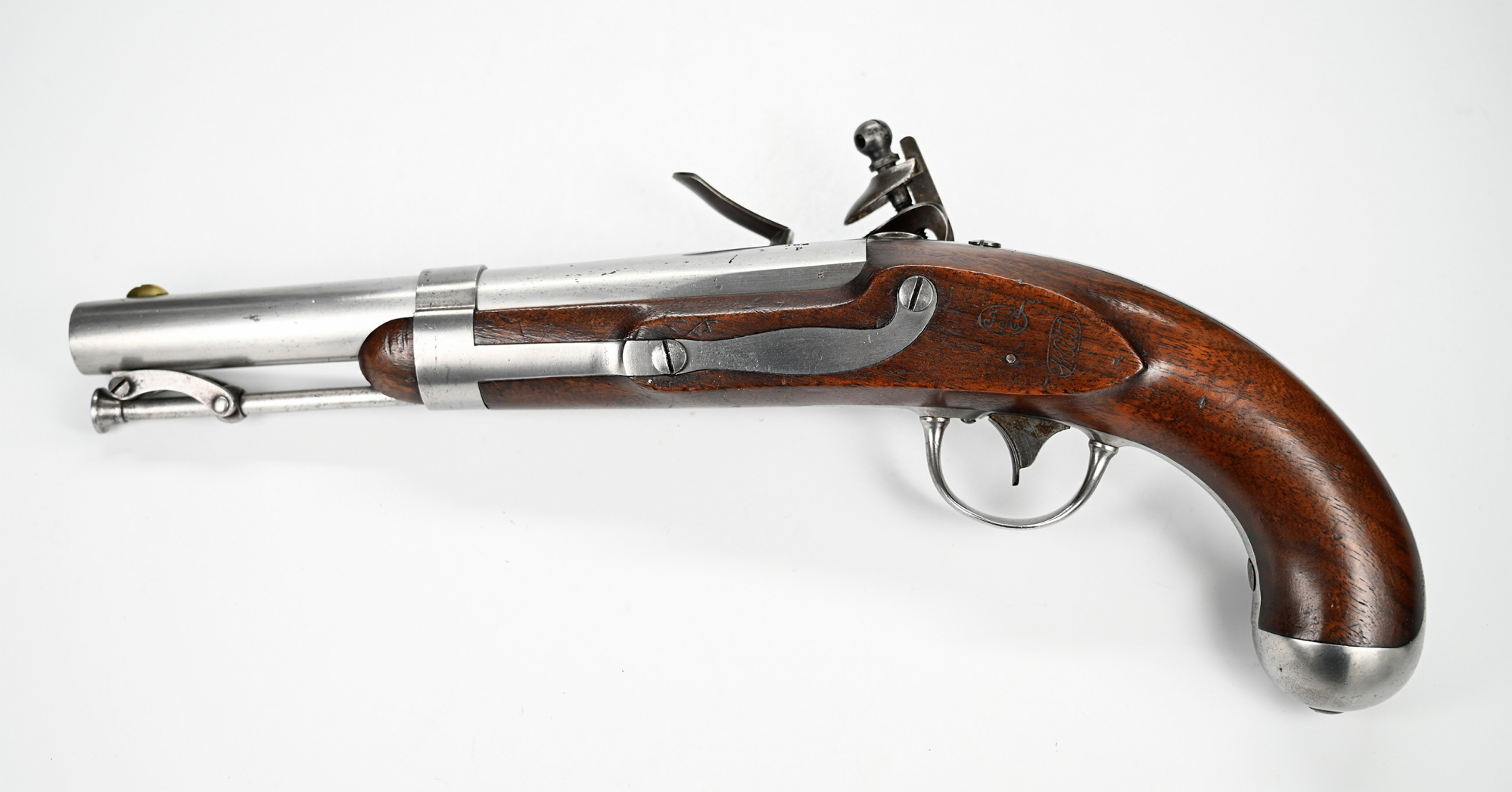

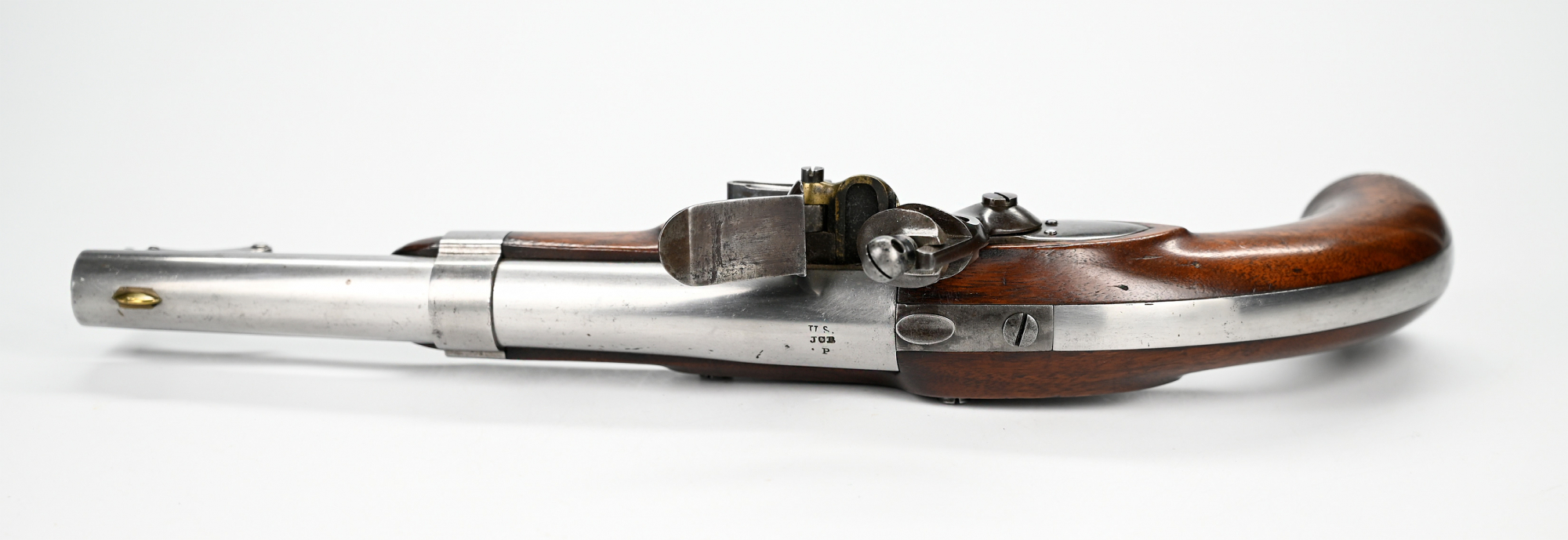
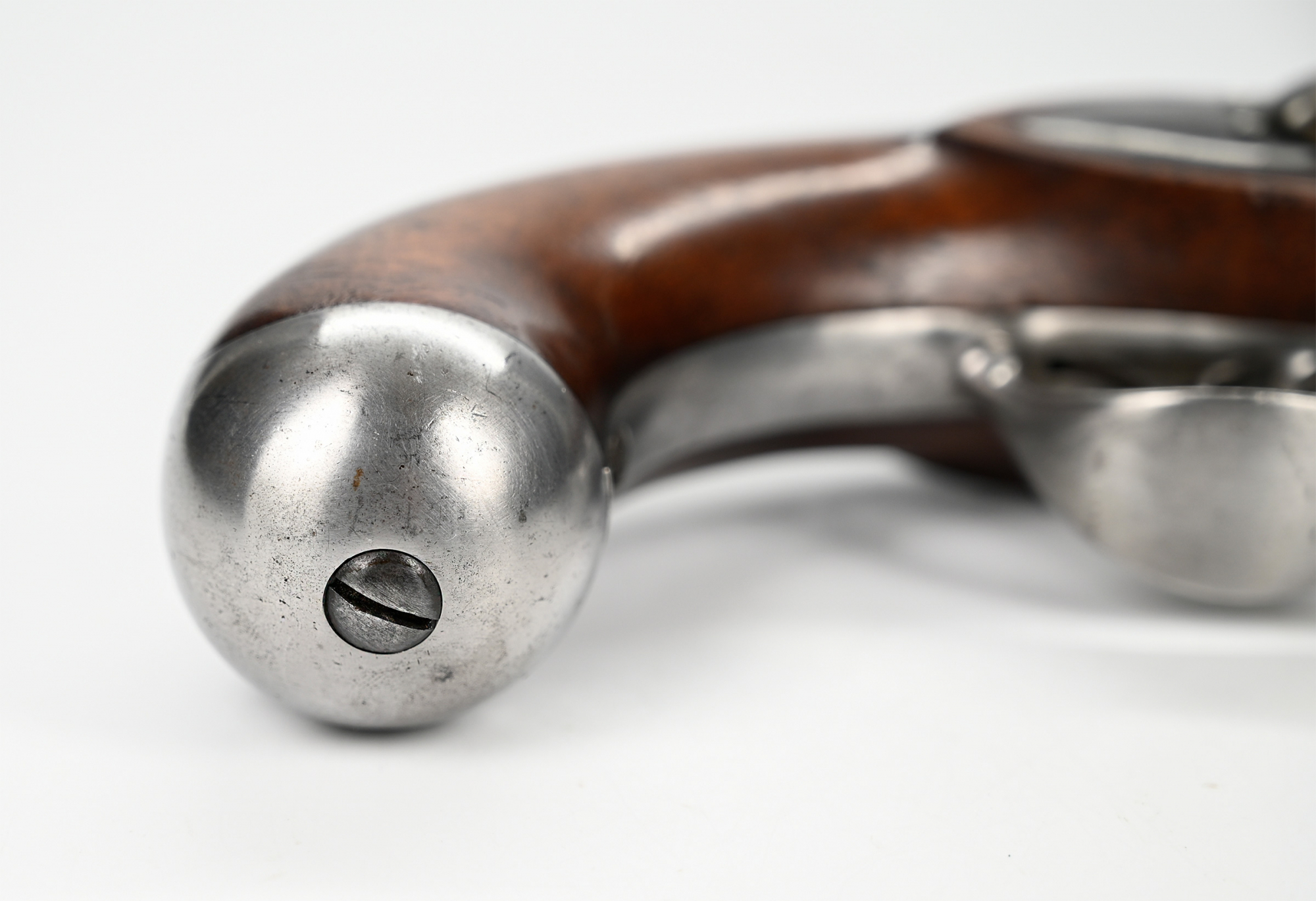
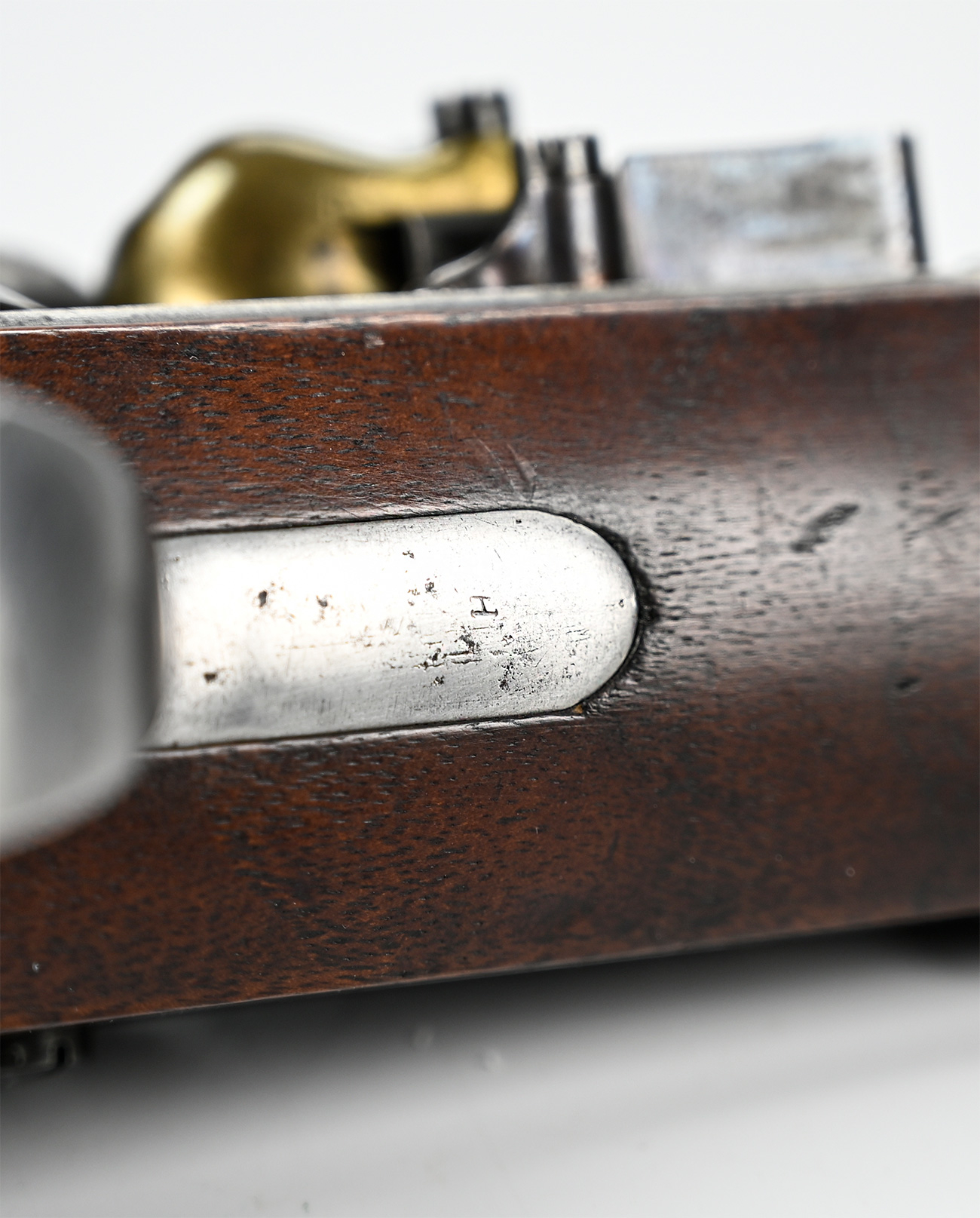
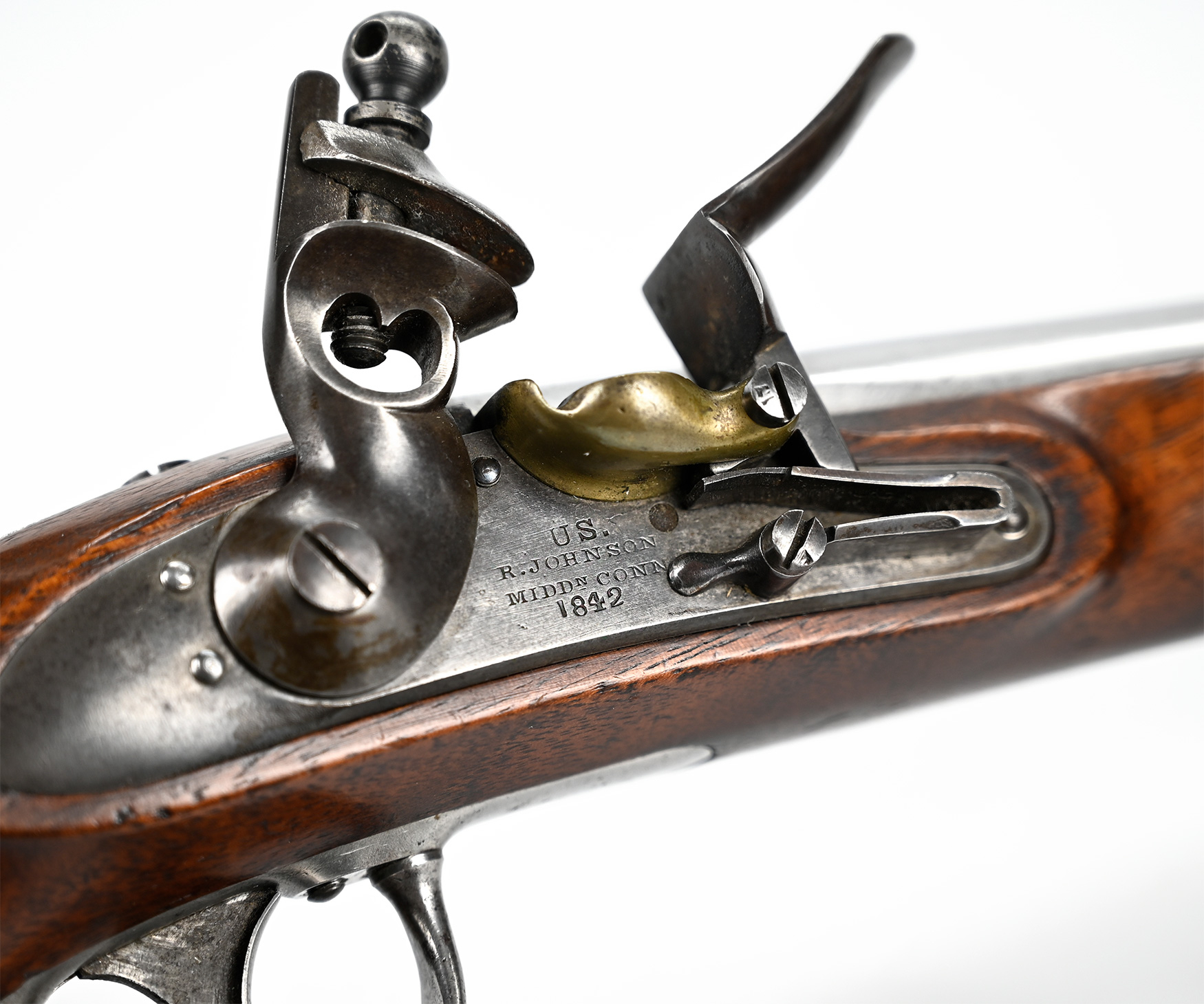
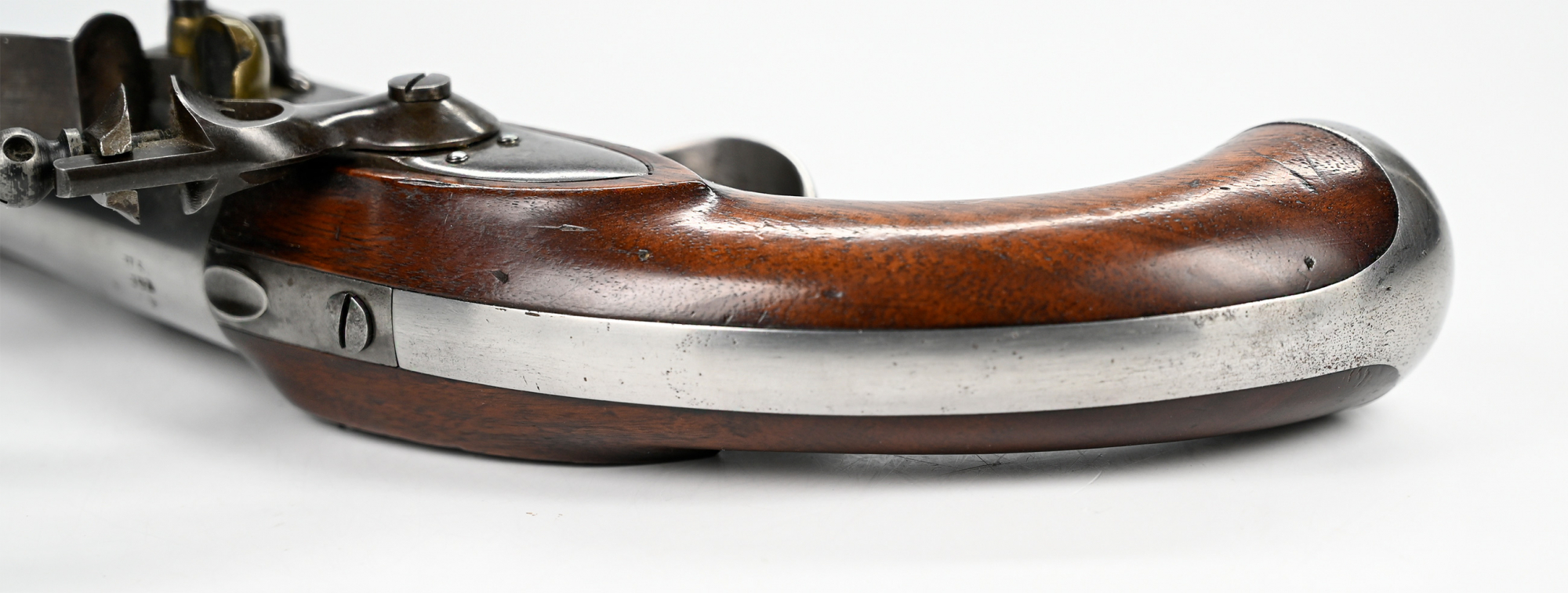
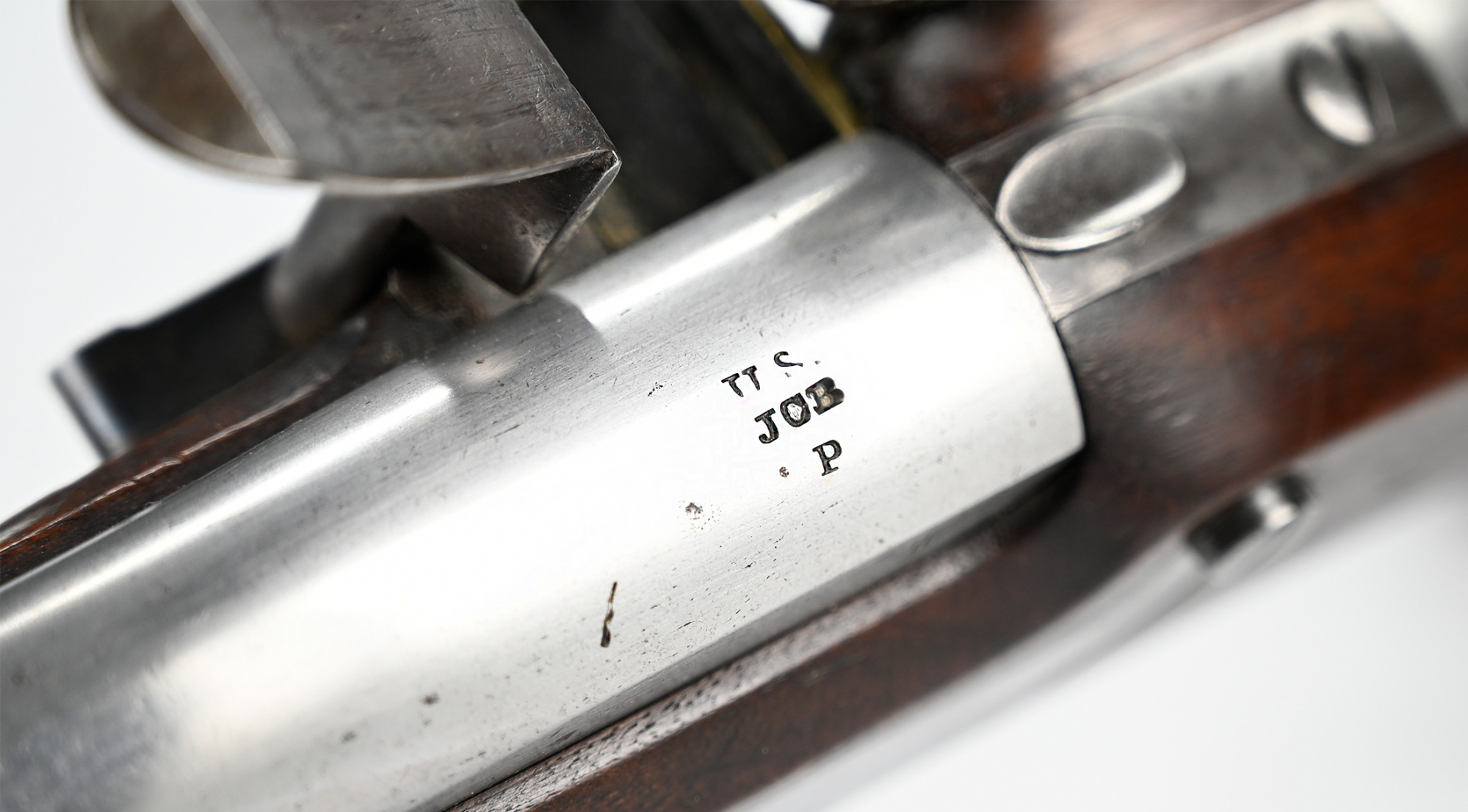
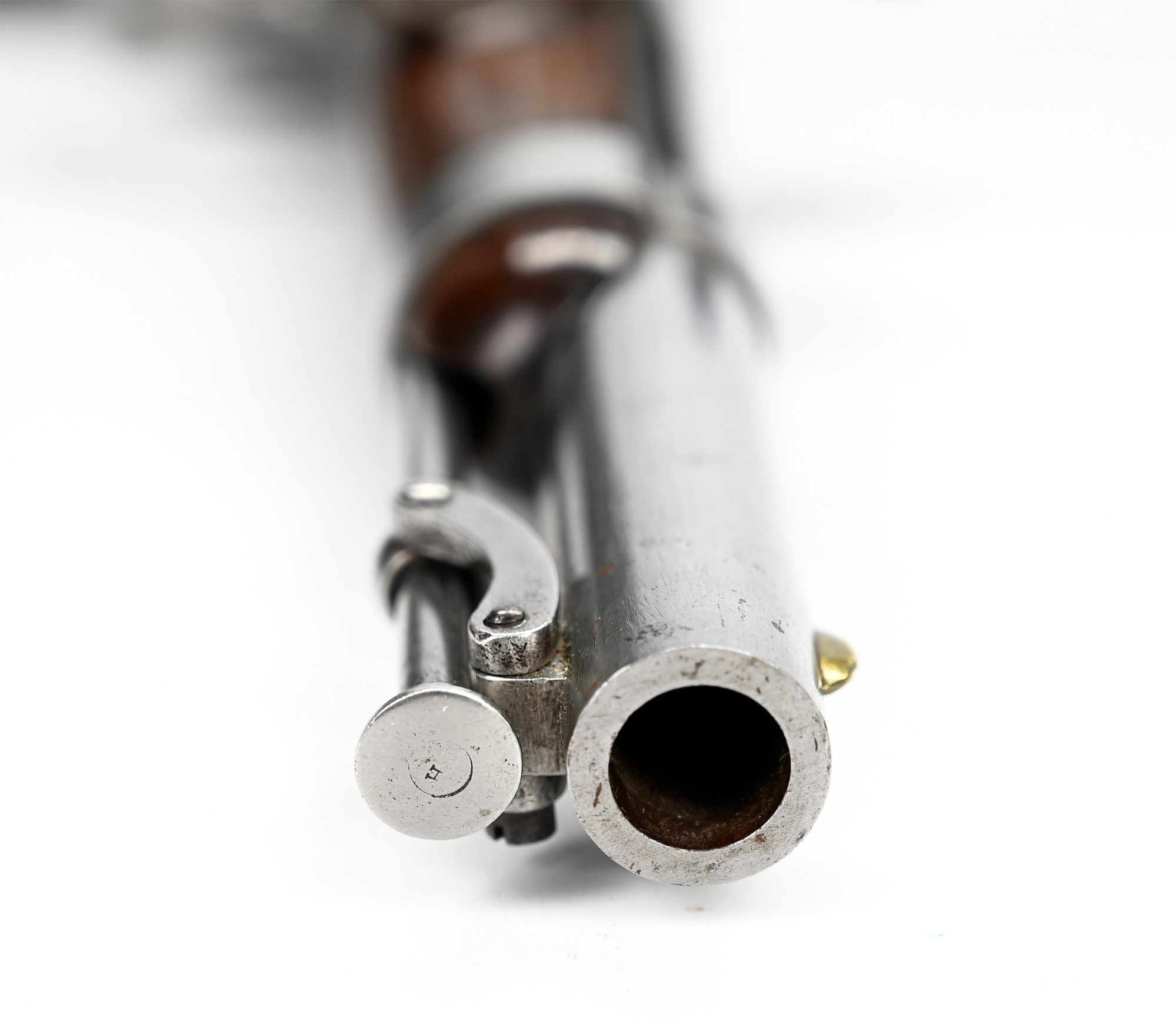
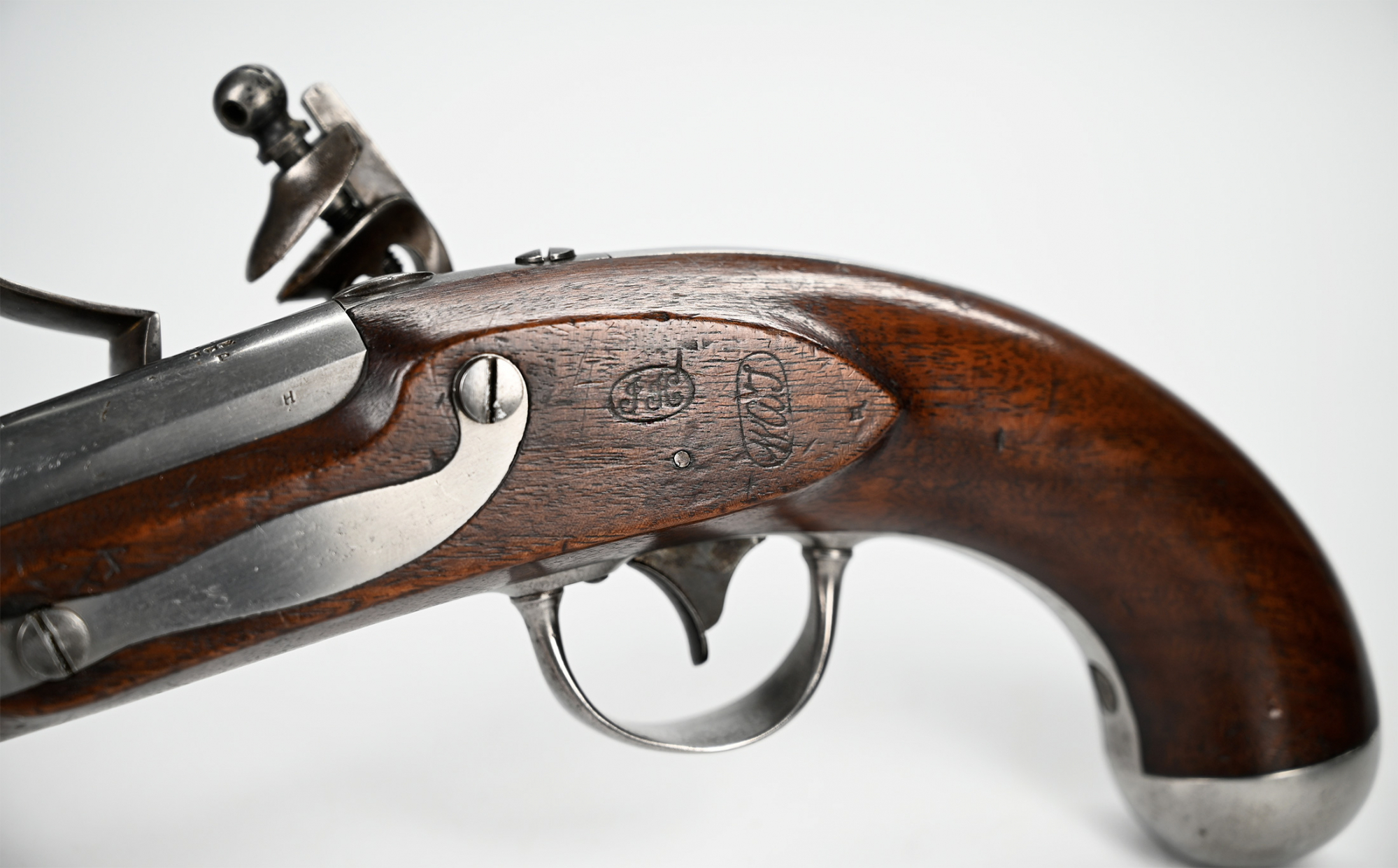
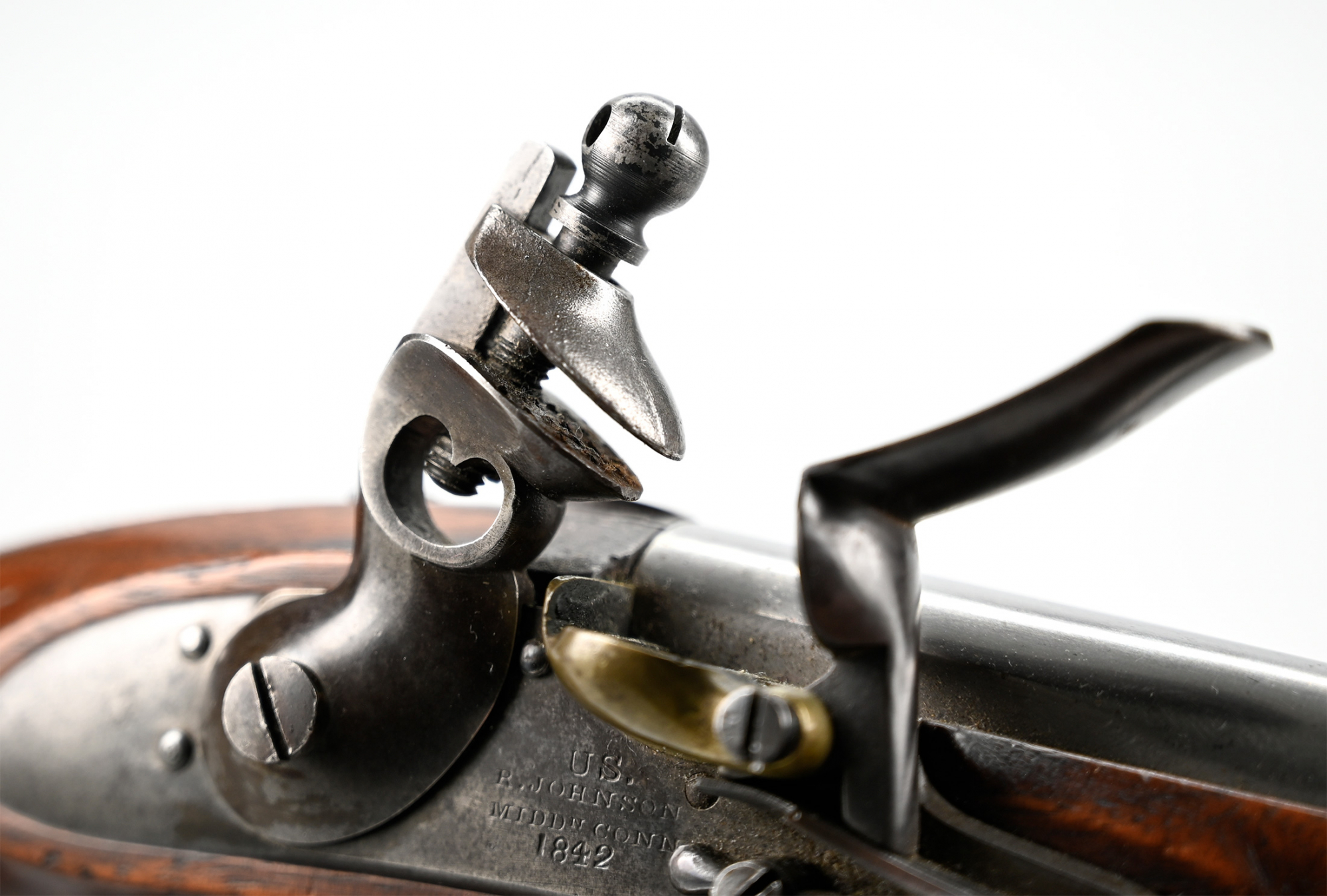
$2,750.00 SOLD
Quantity Available: None
Item Code: 490-3430
This is a crisp example of the .54 caliber U.S. Model 1836 flintlock pistol in near excellent condition. The lock plate markings are sharp: US. / R. JOHNSON / MIDDN CONN / 1842 with just the bottom of the 1 and tip of the 4 being light. The breech is marked in three lines with the barrel inspection proof of Joseph C. Bragg: U.S. / JCB / P with the US rubbed along the bottom from cleaning. (Daum and Pate note his initials on the side flat, but mention only one with the barrel marking, making it perhaps somewhat rarer.) The side flat has two crisp and fully legible oval cartouches: one with the JH mark of armory sub-inspector Joseph Hannis and the other, the W.A.T. final inspection mark of William A. Thornton, chief inspector of contract arms as of March 1842 (and assistant inspector before that.) The pistol also bears Hannis’s small H sub-inspection stamp on other parts: most noticeably on the left barrel flat, the very rear of the side flat and the triggerguard tang.
The wood to metal fit is very tight. The metal is smooth, with no pitting or corrosion. The lock plate, hammer and frizzen show as a bluish gray from case hardening. The barrel, barrel band, butt strap and butt cap, triggerguard and swivel ramrod loading assembly were carefully cleaned to bright, and show just some very small, faint gray spots. The breechplug tang matches the hammer and lock. The wood has a nice color and surface, and good edges with just a few light handling marks on the side flat, and some very tiny chipping at the front of the triggerguard and tang and at the breech next the hammer. The brass pan has a nice untouched patina. The mechanics are good.
The Model 1836 was the last of the US martial flintlock pistols and regarded as the best. Roughly 40,000 were produced on contract by Waters and by Robert Johnson, who received a contract for 3,000 of these pistols in June 1836 and another 15,000 in March 1840. The large contract numbers reflect a renewed interest in mounted forces by the government, which had just revived the U.S. dragoons a few years earlier. These pistols were used by many state units and were the standard side arm of the U.S. dragoons in westward expansion at the time and in the Seminole and Mexican Wars. Even before production ended in 1844, however, percussion pistols were coming into use and many of these were altered to that system. Some saw continued use, especially in the hands of some southern militia units, into the Civil War. This is in original flint and is a very good example of a key piece in a martial arms or cavalry collection. [sr] [ph:m]
DISCLAIMER: All firearms are sold as collector's items only - we do not accept responsibility as to the shooting safety or reliability of any antique firearm. All firearms are described as accurately as possible, given the restraints of a catalog listing length. We want satisfied customers & often "under" describe the weapons. Any city or state regulations regarding owning antique firearms are the responsibility of the purchaser. All firearms are "mechanically perfect" unless noted, but again, are NOT warranted as safe to fire.
~~~~~~~~~~~~~~~~~~~~~~~~~~~~~~~~~~~
THIS ITEM, AS WITH ALL OTHER ITEMS AVAILABLE ON OUR WEB SITE,
MAY BE PURCHASED THROUGH OUR LAYAWAY PROGRAM.
CLICK HERE FOR OUR POLICIES AND TERMS.
THANK YOU!
Inquire About MODEL 1836 FLINTLOCK PISTOL BY JOHNSON DATED 1842
Most Popular
Historical Firearms Stolen From The National Civil War Museum In Harrisburg, Pa »
Theft From Gravesite Of Gen. John Reynolds »
Selection Of Unframed Prints By Don Troiani »
Fine Condition Brass Infantry Bugle Insignia »
Large English Bowie Knife With Sheath 1870’S – 1880’S »
Imported (Clauberg) Us Model 1860 Light Cavalry Officer's Saber »
featured item
CONFEDERATE CLIP POINT BOWIE WITH SALVAGED MUSICIAN SWORD BRASS HILT
This clip-point Bowie a great example of southern improvisation- a kind of weapons-making version of folk art – not sophisticated, but with an appeal of it own. Measuring 19.5 inches overall, the knife has a 13.25 inch blade that is 1.5 inches… (490-3265). Learn More »


